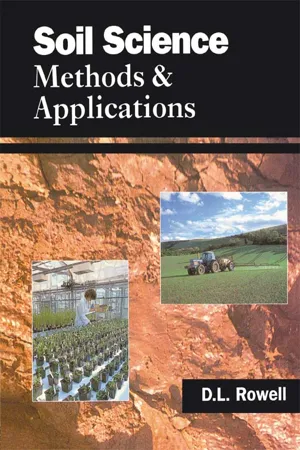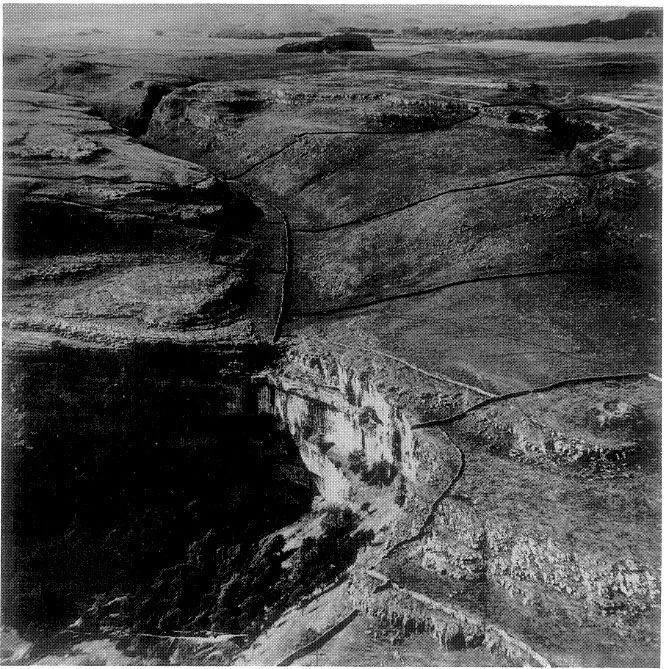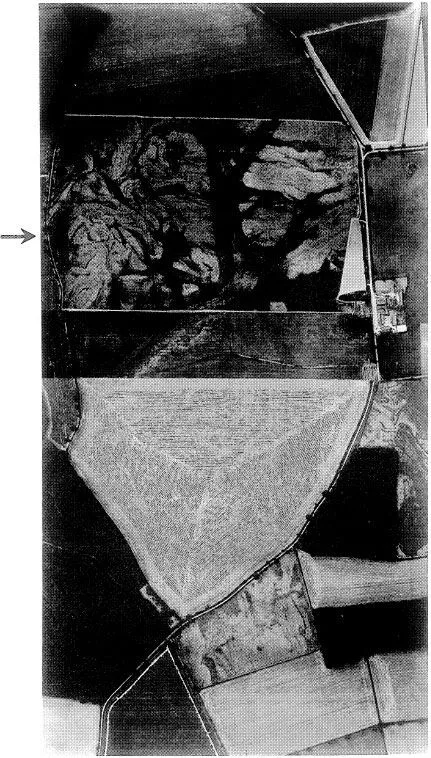
This is a test
- 368 pages
- English
- ePUB (mobile friendly)
- Available on iOS & Android
eBook - ePub
Book details
Book preview
Table of contents
Citations
About This Book
Offers a practical introduction to the various basic methods of assessing the properties of soil. Each method is explained in a concise and accessible manner, providing useful guidance on how each method might be used in a practical situation.
Frequently asked questions
At the moment all of our mobile-responsive ePub books are available to download via the app. Most of our PDFs are also available to download and we're working on making the final remaining ones downloadable now. Learn more here.
Both plans give you full access to the library and all of Perlego’s features. The only differences are the price and subscription period: With the annual plan you’ll save around 30% compared to 12 months on the monthly plan.
We are an online textbook subscription service, where you can get access to an entire online library for less than the price of a single book per month. With over 1 million books across 1000+ topics, we’ve got you covered! Learn more here.
Look out for the read-aloud symbol on your next book to see if you can listen to it. The read-aloud tool reads text aloud for you, highlighting the text as it is being read. You can pause it, speed it up and slow it down. Learn more here.
Yes, you can access Soil Science by David L. Rowell in PDF and/or ePUB format, as well as other popular books in Physical Sciences & Geography. We have over one million books available in our catalogue for you to explore.


Soils in the Field
INTRODUCTION
The earth’s surface is covered by three materials in various combinations; water (including snow), rock and soil. Soil results from the weathering of rock materials, which involves both the physical breakdown of rock into smaller particles and chemical alteration of its composition (Ch. 2). There are, however, many other processes which together produce the distinctive features of the material we call soil and organize this material into soils on the surface of the land. Of primary importance are the processes associated with plants, animals and micro-organisms which colonize the soil (Ch. 3). The rates at which these processes occur depend primarily on climate, resulting in the wide range of soils and soil properties which are observed around the world.
The soil is always an important component in the system comprising the lithosphere, the atmosphere and the biosphere. Soil properties reflect the varying nature of the interactions within this system. Soil is essential for many human activities, and we can only successfully and sustainably undertake these activities if we understand how soil has been developed and how it is affected by changes in the system, particularly those in the biosphere caused by our manipulation of vegetation and soil.
SOIL DEVELOPMENT
During the second half of the nineteenth century Russian soil scientists led by Dokuchaiev observed that soil properties seemed to be influenced by various soil-forming factors, and expressed these relationships in a quasi-mathematical formula:

where S represents the soil or some soil property, and the soil-forming factors are climate (cl), parent rock (p), topography (r), vegetation (v), soil organisms (o) and the time over which the soil has been forming (t).
The inclusion of time in Eq. 1.1 highlights the fact that soil is a dynamic system, in which the soil-forming factors influence the rates at which processes occur, with rate × time measuring the changes produced by the processes. The lengths of time involved in causing changes in properties vary from hours for the formation of an earthworm cast for example, to years for the formation and incorporation of humus and to millennia for the weathering of rocks and the formation of clay minerals. Thus the properties of a soil profile composed of several horizons and extending perhaps beyond a metre below the surface are the result of processes operating over very long periods of time. During this time changes in weather may have altered the topography, vegetation and organisms (the factors are not independent) and the rates at which processes have occurred have not been constant during the formation of the soil. Even without changes in climate, processes would not have operated at a constant rate during soil development. For example, changes in the composition of rock may have occurred initially at a rapid rate, slowing as the weathered material approached an equilibrium with its environment. Similarly as physical weathering of rock produces a deepening layer of soil material, so a succession of plants and organisms can colonize the area until a climax system is reached where little further change in soil properties may occur. Thus the rates at which processes operate today are not the same as the rates which have occurred in the past.
One further limitation of Eq. 1.1 is that the relative importance of the factors seems to vary depending on the scale at which the effects are being considered. For example, Dokuchaiev’s original observations emphasized the importance of climate as the factor primarily responsible for the broad distribution of soils over the land of Russia. However within a climatic region differences in parent material may be the major factor causing soil differences. At an even more local scale, vegetation and topography may be the controlling factors if climate and parent material vary little over the area (Fig. 1.1 and Plate 1.1). At the scale mostly considered in this book, local variability within a field or a plot is the primary concern, and normally reflects variations in parent material, topography and the vegetation present before the land was brought into agricultural use (Plate 1.2).
Despite the limitations of Eq. 1.1 as a basis for understanding soil development, it does provide a logical framework within which soil properties and processes can be investigated and a century after its introduction is still the basis for understanding the spatial distribution of soils.

Figure 1.1 An idealized cross-section of the Malham area of North Yorkshire showing the patterns of soils developed over Carboniferous Limestone. Plate 1.1 is an aerial photograph of this area. There are two distinct sets of soils; those developed directly on the weathering residues of the limestone, and those on a non-calcareous drift overlying the limestone. The former are various forms of rendzinas, the main differences being the amount of limestone rubble in the soil and soil depth. The latter are base-rich brown earths where the drift is shallow, and more acidic brown earths where the drift thickens. At the foot of the slope acidic and poorly drained peaty gleyed podzols occur where the drift is several metres thick. From Bullock (1971). © Crown Copyright 1993/MOD reproduced with the permission of the Controller of HMSO.
Of the many introductory books which deal with soils in the field, their development and distribution, Bridges (1978) and Molloy (1988) are recommended. The latter is unique in that it places scientific information in the context of an appreciation of the beauty of soils and landscape in New Zealand.
THE USE OF SOILS
Soil development viewed through Eq. 1.1. does not take direct account of the changes in soil properties which result from the use of soils for the production of food, fibre and timber. This is a major factor influencing soil properties in the inhabited regions of the world, the effects beginning after the Neolithic period with the shift from hunter-gatherer economies to the more sedentary agriculturally based communities (Hillel, 1992). Thus to Dokuchaiev’s equation, management could be added as an extra factor. It would, however, have a different character, operating only over recent time, in many instances counteracting natural processes of development and in very recent times adding agricultural chemicals and domestic and industrial wastes. An extension of Eq. 1.1 can therefore be written which takes account of these aspects of management as a soil-forming factor as follows:
S = a function of (cl, p, r, v, o)t1 + (m)t2
where m is the management factor, t1, is the total time the soil has been forming, and t2 is the time since soil use began. This equation suggests an independence between management and the other factors which is not the case, since management has its effects primarily through alterations in vegetation, organisms and local climatic conditions. The possibility of global climate change resulting partly from the carbon dioxide (CO2) produced by the burning of vegetation and loss of soil organic matter emphasizes the link between management and the other soil-forming factors.
The last few decades have seen a rapid increase in concern regarding the effects of our activities on the environment. Our effects on soils are highlighted by catastrophic events such as salinization (Ch. 14) resulting from poorly managed irrigation schemes, and erosion resulting from the exposure of sensitive soils to wind and rain. For the most part, however, soils are able to accommodate changes in use, their properties being naturally well buffered (stable), changing only slowly towards a new equilibrium which depends on the altered soil-forming factors.

Plate 1.1 Limestone scenery north of Malham, North Yorkshire. The Cove is in the foreground and the Tarn in the distance. Limestone pavements and a dry valley dominate the centre of the photograph. Figure 1.1 shows the distribution of soils and vegetation in this area. Photograph by the University of Cambridge Committee for Aerial Photography. © Crown Copyright 1993/MOD reproduced with the permission of the Controller of HMSO.

Plate 1.2 Soil variability on part of the Cromer Ridge, Norfolk. The pattern of grey tones across the field marked with an arrow sho...
Table of contents
- Cover
- Half Title
- Title Page
- Copyright Page
- Table of Contents
- Acknowledgements
- Prologue
- Chapter 1 Soils in the Field
- Chapter 2 Mineral Particles – the Soil Framework
- Chapter 3 Organic Materials – Alive and Dead
- Chapter 4 The Arrangement of Particles and Pores – Soil Structure
- Chapter 5 Water in Soils
- Chapter 6 Air in Soils – Supply and Demand
- Chapter 7 Particle Surfaces and Soil Solutions
- Chapter 8 Soil Acidity and Alkalinity
- Chapter 9 The Availability of Plant Nutrients – Potassium, Calcium and Magnesium
- Chapter 10 Phosphorus and Sulphur
- Chapter 11 Nitrogen in Soils
- Chapter 12 The Availability of Water in Soils
- Chapter 13 Soil Fertility
- Chapter 14 Salinity and Sodicity
- Chapter 15 Pesticides and Metals
- Epilogue
- Appendix 1 Symbols, units and other matters
- Appendix 2 Molar masses of selected elements
- Appendix 3 The program of the Bucket model for the soil water budget (Section 12.3)
- References
- Index